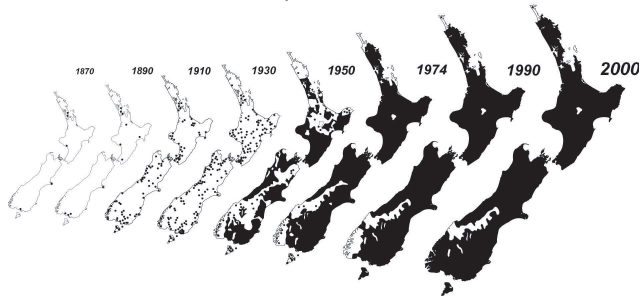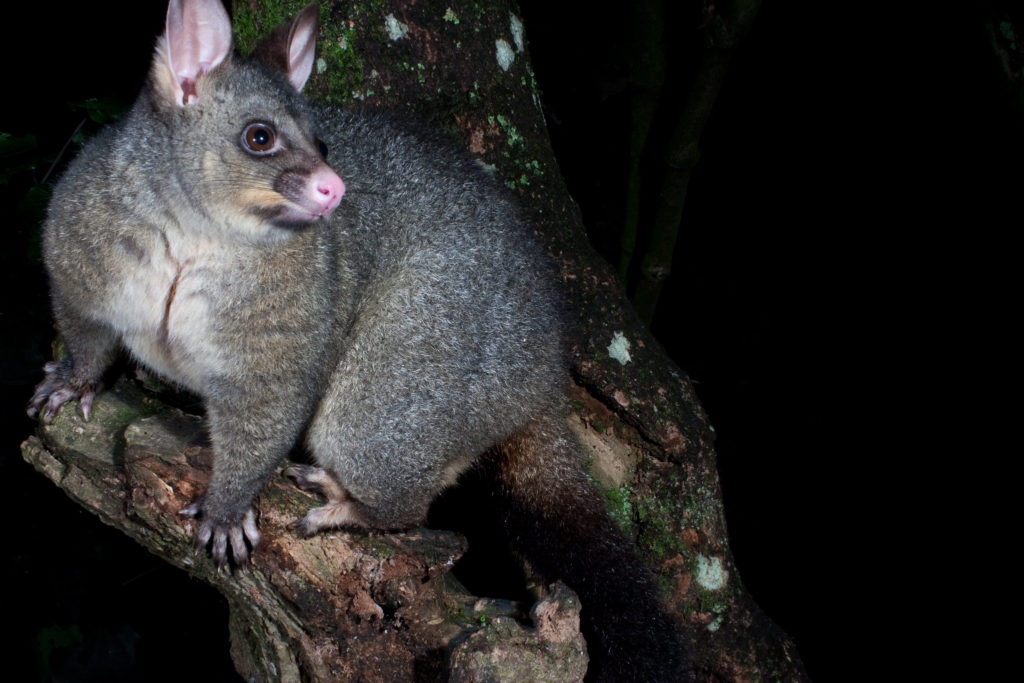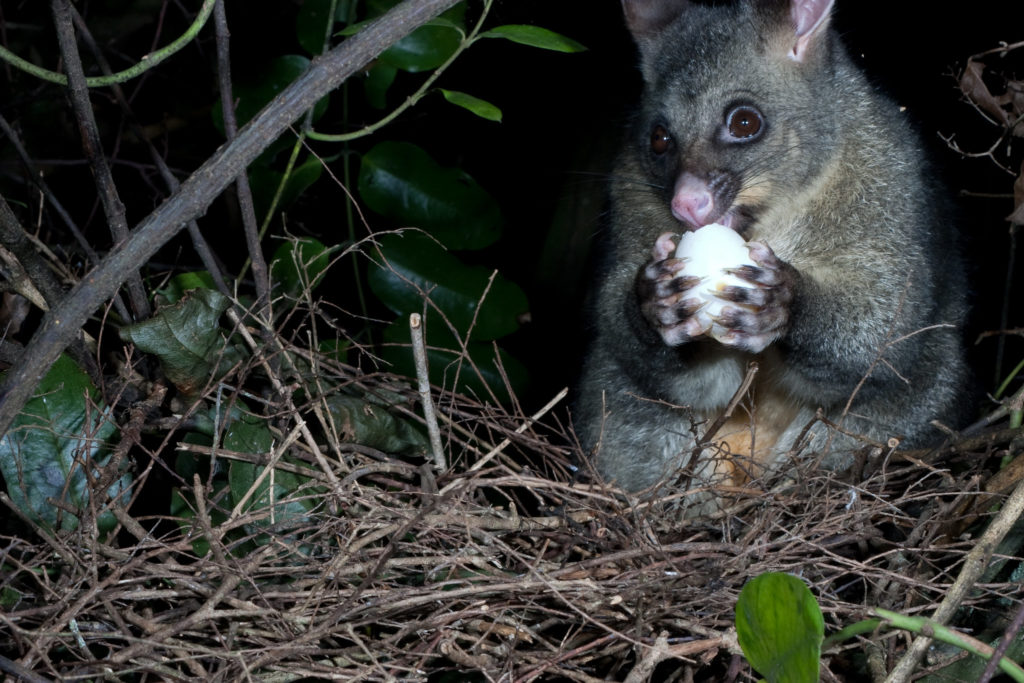ON THIS PAGE
How did they get here?
Possums were first introduced in 1837 because some early European settlers were hoping to establish a fur industry. Those animals did not survive, but people kept trying. The first possum population to survive was in Southland in 1858.
In 1921 the Government made it illegal to bring any more possums into New Zealand. It was too late; by then, they were already spread across the country.
In 1946, possums were officially declared a pest in the New Zealand environment. By 1950 they were found in over half of New Zealand and they kept spreading.

Fiordland and Northland were the last areas of mainland New Zealand to be invaded by possums. In the 1960s there were hardly any possums in Northland, but by the 1990s – only 30 years later – 10-15 million were estimated to live there.
Possums numbers reached their highest point in the 1980s when there were 50-70 million of them in New Zealand. With such high populations, trappers began to make a good living from hunting them. Throughout the 1970s, prices for their skins were good. In 1981, the best year for trappers, 3.2 million skins were exported.
What do they look like?
Brushtail possums can be silver-grey, brown, black, and gold. They have bushy, prehensile tails (tails that can easily grasp tree branches) and large, pointed ears. Possums’ bodies can be 30-50cm long with a tail length of 24-40cm, and can weigh 1.5-4.5kg. Possums are marsupials, so females have a pouch.

Where do possums live?
They are spread across most of the country and can be found wherever there is shelter and a good food supply. They live in trees, feasting and thriving on the seasonal leaves, buds, flowers, fruit/berries and nectar provided by our local plants, but also move across open country to hunt and graze.
What do we know about their behaviour?
Kiwi Coast has some useful information about possum behaviour (summarised below from their Northland Pest Control Guidelines, pp. 8-9):
- They are nocturnal and feed at night.
- Often follow the same track, forming flattened paths about 20cm wide.
- Have an average home range of 200m in forest and multiple nest sites.
- Have favourite trees that are visited regularly, leaving extensive scratch marks in their bark and heavy browsing of leaves and fruit.
- Their dislike of wet weather makes control much more successful during fine weather.
What impact do possums have?
People used to think that possums only ate plants, but in 1993 possums were filmed eating the eggs and chicks of endangered kōkako. They have since been filmed eating the eggs, chicks and even adults of many other native birds including kererū, kiwi, harrier hawk, fantail, muttonbird, and tūī. They also eat the nectar and berries that native birds like to eat so there is less food for the birds.
Possums also carry a disease called bovine Tb (tuberculosis) which they spread to cattle. They also eat pasture so there is less food for farm animals. The damage done by possums costs NZ farmers about $35 million every year. According to Te Ara, the New Zealand Government spends over $110 million per year on possum control.

How you can help control possums
If you’ve identified possums on your property (see how to identify predators), you can:
- Trap — regular trapping is a good way to manage them. Visit our trapping and baiting toolkit to choose the right trap and baits. Did you know that they respond well to visual lures (blue and white in particular) and are attracted to fresh fruit, peanut butter, and a sprinkling of sugar over the lure? Make sure you always wear gloves when handling your trap or catches.
- Use toxins in a bait station — regular baiting will keep numbers at low levels. Traps or bait stations can be moved to target seasonal food supplies such as pine pollen in July – August (their poo turns yellow!); willow-poplar budding in October-December; supplejack, taraire, hinau, tawa fruiting in May – August; late summer podocarp fruit such as totara; various orchard trees when in fruit throughout the year.
- Shoot at night — suitable in rural areas only and effective if done regularly. Warm nights are best, especially after rain. Use a spotlight and a .22 rifle or shotgun. Read the NZ Police’s safety and legal requirements for firearms and learn more about how to control them on farms.
Want to know if your control method is working? Make sure you monitor your results. If nothing’s happening, you may need to try something different.

